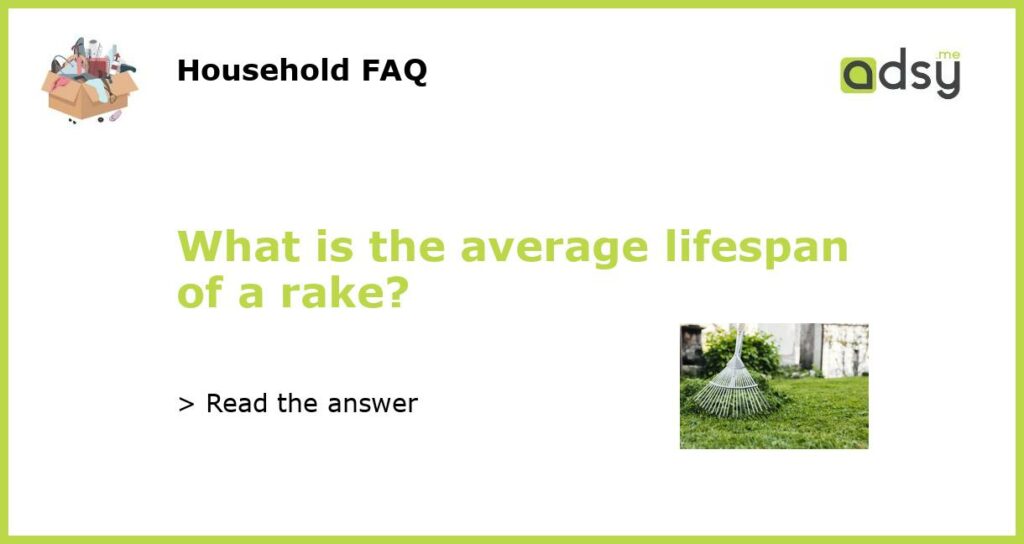Understanding the Lifespan of a Rake
When it comes to gardening tools, rakes are essential for maintaining a neat and tidy outdoor space. Whether you’re removing leaves, spreading mulch, or leveling the soil, a rake is a go-to tool. However, like any other tool, rakes have a limited lifespan. In this article, we will explore the average lifespan of a rake and provide some tips on how to extend its longevity.
Factors Affecting the Lifespan of a Rake
The average lifespan of a rake depends on various factors. Here are a few key factors that can affect how long your rake will last:
Quality of materials and construction
The quality of the materials used in manufacturing the rake and the construction techniques employed greatly impact its lifespan. Rakes made with high-quality materials, such as durable metal heads and sturdy wooden or fiberglass handles, tend to last longer than those made with cheaper materials.
Frequency of use and workload
The more frequently you use a rake and the more demanding the tasks you use it for, the shorter its lifespan will be. Rakes that are used daily or on a large property with heavy debris are likely to wear out faster than those used infrequently or on a smaller scale.
Maintenance and care
Proper maintenance and care can significantly extend the lifespan of a rake. Regular cleaning after use, storing it in a dry place, and inspecting for any signs of wear or damage can help prevent premature deterioration.
Environmental conditions
The environmental conditions in which you use and store your rake can affect its lifespan. Exposure to extreme heat, cold, moisture, or prolonged sunlight can lead to rust, warping, or weakening of the rake’s materials over time.
Average Lifespan of a Rake
On average, a well-maintained rake can last anywhere from 5 to 10 years. However, this range can vary depending on the factors mentioned above. Rakes that are made with high-quality materials and are used and stored properly may last even longer.
How to Extend the Lifespan of Your Rake
If you want to get the most out of your rake and extend its lifespan, here are a few tips to keep in mind:
Choose a high-quality rake
Invest in a rake that is made with durable materials and solid construction. Look for rakes with metal heads that won’t bend easily and handles made of sturdy wood or fiberglass.
Store it properly
After using your rake, clean off any dirt or debris and store it in a dry place. Avoid leaving it exposed to the elements, as prolonged exposure to moisture or sunlight can cause damage over time.
Inspect for wear and damage
Regularly inspect your rake for signs of wear or damage. Look for loose or cracked tines, bent or rusty metal, or worn-out handle grips. Replace or repair any damaged parts as needed to prevent further deterioration.
Avoid excessive force and overload
Using excessive force or overloading your rake can put unnecessary strain on its materials and shorten its lifespan. Be mindful of the amount of weight or debris you are moving with your rake, and use the appropriate tool for heavier tasks.
A rake is a valuable tool in any gardener’s arsenal, and understanding its average lifespan can help you make informed decisions when purchasing and caring for one. By considering the quality of materials, frequency of use, maintenance, and environmental conditions, you can extend the lifespan of your rake and ensure it serves you well for years to come.






